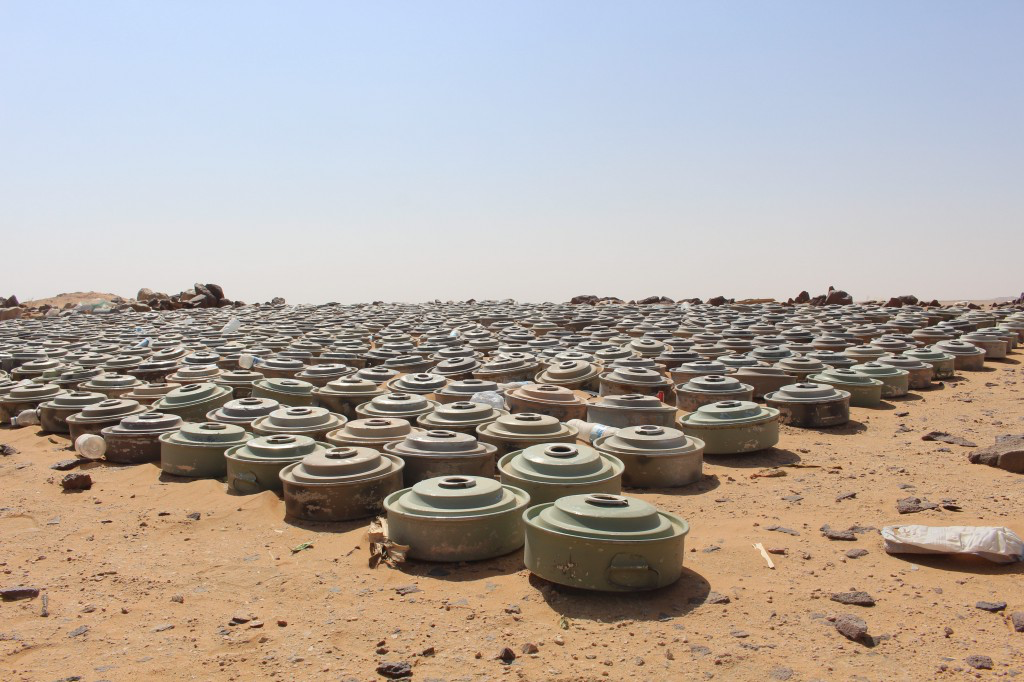
Barran Press
Yemen's civilization stands among the oldest in the world, dating back to the end of the Stone Age, as stated by French historian Vigeum Charlo in his book "Yemen: Land of Antiquities."
Yemen is considered the cradle of ancient civilizations, boasting a wealth of historical artifacts that range from ancient temples to cities built with unique architectural artistry. Collectively, these treasures represent a cultural heritage that reflects Yemen's profound and extensive history.
However, this historical wealth faces significant threats in the midst of fierce competition from cross-border antiquities smuggling networks, which aim to smuggle Yemeni artifacts and sell them in international auctions, putting them at risk of extinction.
A Bleak Chasm
Abdullah Mohsen, a researcher dedicated to monitoring and documenting looted Yemeni artifacts, describes the phenomenon of Yemeni antiquities smuggling as a "bleak chasm that consumes hundreds of archaeological pieces annually." In a statement to "Barran Press," he explains that the estimated number of looted pieces during the years of war exceeds 20,000, according to semi-official estimates.
According to Mohsen, this phenomenon can be divided into three main axes. Firstly, there are "illegal excavation and random digging operations in numerous provinces and districts, carried out semi-publicly under the eyes of the authorities, who turn a blind eye."
These operations, Mohsen states, have led to the destruction of many sites and the establishment of a thriving market for selling archaeological pieces that extend from Al-Jawf to Aden and from the Red Sea coast to the far reaches of Al-Mahra.
The second axis of the phenomenon relates to the theft and damage of antiquities in government museums, resulting from neglect, shelling, and destruction. Meanwhile, the third and most impactful axis is "the smuggling of what resulted from the previous two axes abroad, along with the forgery of authenticity documents, sale invoices, and export documents to make the sale of our antiquities in auctions legal and legitimate."
Regarding combating this phenomenon, Mohsen emphasizes in his interview with "Barran Press" that halting it "requires immediate intervention from the government and its affiliated agencies, neutralizing the issue of antiquities from political conflicts and rivalries, and engaging the local community in stopping excavation, promotion, and sale operations of antiquities."
Yemeni Antiquities Day: The Battle to Protect Yemen's Cultural Treasures
Amidst the absence of a decisive official approach to safeguard Yemen's archaeological and cultural treasures, popular efforts are taking a stand against this plunder. Yemeni activists have designated June 23 as a national day for Yemeni antiquities since 2022.
For the third year in a row, activists are celebrating this day as a response to attempts to tamper with Yemen's civilization artifacts and to raise awareness about Yemen's cultural identity and the concept of heritage preservation, which contributes to the safeguarding of Yemeni antiquities.
Dr. Manal Dammaj, a researcher in Yemeni history and ancient Yemeni civilization, considers the commemoration of this occasion "extremely important." She emphasizes that the chosen date aims to "restore the prestige of Yemen's ancient history and take pride in our civilization and historical heritage, deeply rooted in the greatest ancient civilizations worldwide."
Dammaj, in an interview with "Barran Press," explains that this celebration serves as a reminder to state officials and Yemeni citizens about the importance of antiquities. It calls for their preservation and restoration, the recovery of looted and smuggled artifacts, the rehabilitation of museums, the protection of fixed antiquities, and a reminder to specialized entities such as UNESCO and others to safeguard Yemen's archaeological landmarks.
She further explains that the reason behind the failure to protect Yemen's antiquities lies in the systematic smuggling, deliberate destruction, forgery, and neglect, all aimed at eradicating Yemen's civilization, severing its historical roots, distorting its heritage, and obliterating its identity, driven by malice and a desire to overshadow Yemen's glorious history.
Preserving Yemeni Identity
Dr. Abdullah Al-Ma'alim, one of the founders of the Yemeni Antiquities Day concept, shares his perspective on this day, stating, "Yemeni Antiquities Day has become an occasion where Yemenis gather to celebrate their cultural and historical heritage and remind the world of the importance of these antiquities."
Speaking to "Barran Press," Al-Ma'alim explains that "the idea of dedicating a day to Yemeni antiquities emerged from the depth of our remarkable Yemeni history, as the ancient inscriptions on our artifacts reflect the glory and grandeur our nation possessed before the racist Hashemite occupation."
He adds that the goal of this concept is "to shed light on the importance of preserving our archaeological heritage, enhance societal awareness of the significance of these antiquities, and protect them from artifact thieves and history looters." He points out that "after three years, we can see the significant importance of this day in promoting the national spirit and protecting Yemeni identity."
Al-Ma'alim expresses his regret that the internationally recognized Yemeni government has not yet officially designated it as a national day, despite its importance. He considers "official recognition of this day as an important step to enhance efforts in preserving our archaeological heritage." Furthermore, he emphasizes that "the ongoing tampering with antiquities, including excavation, smuggling, and sale, has not ceased."
Continued Efforts
Al-Ma'alim talks about the continuous efforts of activists and intellectuals who demand government action through relevant authorities to protect antiquities. They also call on UNESCO to contribute to preserving our cultural heritage for future generations and restore Yemen's cultural significance on the global map. Yemeni heritage is an integral part of the world's human heritage.
He states that "the movement of activists extends beyond celebrating Antiquities Day. They aim to establish popular organizations and initiatives to protect antiquities in archaeological areas, prevent their smuggling, and reclaim Yemeni artifacts from international museums and auctions."
Al-Ma'alim calls on the Parliament to enact strict and effective laws to monitor and hold accountable those involved in antiquities smuggling and those responsible for tampering with them. He emphasizes the necessity of "imposing severe penalties to deter those who infiltrate Yemen's cultural heritage and plunder it, and strengthening surveillance of international trade in antiquities."
The Role of UNESCO
Regarding the role of the United Nations Educational, Scientific and Cultural Organization (UNESCO) in reclaiming Yemeni artifacts, Yemen's ambassador to UNESCO, Mohammed Jumaih, states that "UNESCO assists in reclaiming antiquities by engaging with countries where Yemeni artifacts are found."
Jumaih, in an interview with "Barran Press," explains that when he becomes aware of the existence of a historical artifact in any country, he contacts UNESCO, which then communicates with the relevant authorities and sometimes directly with auction houses.
According to Jumaih, UNESCO's efforts sometimes succeed in halting auctions, while other times they do not. He points out that the success of these endeavors "depends on several factors and the responsiveness of the concerned institutions to Yemen's request for cooperation with UNESCO."
He further adds, "Preparations are currently underway to establish a comprehensive database for all missing Yemeni artifacts. This database will enable us to communicate because, at times, we are unable to make claims or determine their whereabouts due to the lack of a database. Many smuggled artifacts have been taken away from their sites, and we are unaware of the nature of the artifacts there, as no excavation has been conducted."
On the Path of Confrontation
Dr. Salem Hashem, Head of the Tourism and Antiquities Department at Saba University, emphasizes the importance of enhancing efforts to protect these artifacts from the challenges they face, including armed conflicts that have caused significant damage due to shelling, battles, and the use of some archaeological sites as camps.
In an interview with "Barran Press," Dr. Hashem highlights the issues of looting, theft, chaos, lack of security, deliberate sabotage by extremist groups targeting cultural and historical landmarks, neglect, resource shortages, and environmental challenges. Additionally, he mentions the lack of awareness among individuals and the deterioration of infrastructure.
He mentions that there have been significant milestones in confronting these challenges, such as the first consultative meeting for the protection of cultural heritage titled "Challenges and Solutions" held in October of the previous year, under the auspices of the Presidential Council member and Governor of Marib Governorate, Major General Sultan Al-Arada.
commendations and Official Confirmation
Dr. Hashem explains that the consultative meeting resulted in a number of recommendations that aim to protect cultural heritage in the face of the widespread destruction of Yemen's unified identity. He highlights the affirmation by Major General Sultan Al-Arada, a member of the Presidential Council, in the closing session of the meeting, emphasizing the need to elevate these recommendations to the President of the Presidential Council to become an action plan.
He emphasizes that "preserving Yemen's cultural heritage is a collective responsibility that requires the collaboration of the government, local communities, and international organizations."
Furthermore, he believes that "artifacts are not just remnants of the past; they are a vital part of our present and future. They tell the stories of our ancestors and inspire new generations for creativity and innovation."
Yemenis and the Preservation of Heritage
In regards to the role of Yemeni individuals in preserving their heritage, Mohammed Saba, the head of the Yemeni House for Books and Yemeni Fashion in Cairo, states in an interview with "Barran Press" that "Yemenis have been custodians of heritage throughout history."
For example, he explains that traditional Yemeni clothing, such as the "Maoz" and "Asib," bear inherited motifs from ancient Yemeni civilization. These garments represent a Yemeni attire passed down for thousands of years, and Yemeni people have preserved it, continuing to wear it to this day.
Saba adds, "If we examine ancient Yemeni statues, we find that most of them depict men wearing the Maoz, Janbiya (dagger), and Yemeni belt. Examples include the statue of 'Maad Yakrib' and statues from the 'Awsan' and 'Hadramaut' civilizations, as well as those found in Ma'rib and Dhofar."
He continues, "We can compare these engravings with the architectural motifs in Yemen or the shapes of plants, roses, and flowers that are present in the Yemeni landscape. We will find that these engravings are inspired by palm trees, as seen in Hadrami attire, and by the ornamentation on houses, such as the San'ani curtain."
Saba further elaborates, "We also find that the motifs on the Maoz garments themselves are inspired by the architectural motifs in Yemen, such as the roofs of ancient mosques. These Yemeni motifs have been passed down through generations, seen on clothing, architecture, silverware, and the surface of the Asib, the belt of the Janbiya."
The increasingly popular initiatives and calls to counter artifact smuggling are an extension of the Yemeni people's efforts to preserve Yemen's history and cultural heritage. These initiatives aim to motivate the nearly non-existent government efforts to fulfill its duties in this context.





